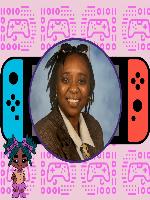
Event Information

Other presentations in this group:
1. Introduction (3 minutes)
Content: Brief overview of session objectives and the importance of integrating technology in education.
Engagement: Use a digital poll (e.g., Zoom Polls or Mentimeter) to ask participants about their favorite technology tools in education.
Process: Encourage participants to introduce themselves in the chat to foster a sense of community.
2. Understanding the Tools (7 minutes)
Content: Introduction to podcasting, vlogging, and Minecraft Education, highlighting their benefits in the classroom.
Engagement: Share brief video clips of successful student projects through screen sharing to illustrate effectiveness.
Process: Facilitate a quick discussion using the chat feature, inviting participants to share their thoughts on potential uses.
3. Interactive Activity: Podcasting & Vlogging Workshop (7 minutes)
Content: Hands-on experience brainstorming ideas for a short podcast or vlog segment.
Engagement: Break participants into small breakout rooms to discuss topics related to a science unit.
Process: Provide digital templates and prompts in the chat; ask groups to share their ideas when returning to the main session.
4. Exploring Minecraft Education (5 minutes)
Content: Overview of Minecraft Education and its applications in science learning.
Engagement: Demonstrate a Minecraft lesson through screen sharing, showcasing an example that aligns with a specific science concept (e.g., ecosystems).
Process: Engage participants in a discussion using the chat or voice, encouraging them to share their insights on the impact of Minecraft on learning.
5. Q&A and Wrap-Up (3 minutes)
Content: Open floor for questions and sharing of additional resources.
Engagement: Invite participants to share experiences or challenges with technology in their classrooms using the chat.
Process: Use a digital platform (like Slido) for participants to submit questions throughout the session, ensuring all queries are addressed.
Engagement Tactics Throughout the Virtual Session:
Peer-to-Peer Interaction: Encourage breakout discussions and sharing of ideas to enhance collaboration in a virtual environment.
Device-Based Activities: Utilize polling and chat features to gather input and enhance engagement.
Hands-On Learning: Provide opportunities for practical application through brainstorming sessions in breakout rooms.
Article
Boston University Center for Teaching & Learning. (n.d.). Project-Based Learning: Teaching Guide | Center for Teaching & Learning. Boston University. Retrieved September 29, 2023, from https://www.bu.edu/ctl/guides/project-based-learning/
Godsey, M. (n.d.). The Benefits of Using Podcasts in the Classroom. Reading Rockets. Retrieved September 27, 2023, from https://www.readingrockets.org/topics/comprehension/articles/benefits-using-podcasts-classroom (Godsey, n.d.)
Kharbach, PhD, M. (2023, May 18). Podcasting in Education: Teacher's Guide. Educators Technology. Retrieved September 27, 2023, from https://www.educatorstechnology.com/2023/01/teachers-guide-on-use-of-podcasting-in.html
McCombs, B. (n.d.). Developing responsible and autonomous learners: A key to motivating students. American Psychological Association. Retrieved September 28, 2023, from https://www.apa.org/education-career/k12/learners
Websites
Edutopia
A comprehensive resource for educators that offers articles, videos, and strategies on integrating technology in the classroom.
https://www.edutopia.org/
Common Sense Education
Provides reviews and resources for educational technology, focusing on how to effectively implement tools in the classroom.
https://www.commonsense.org/education
Recognized Experts
Dr. Kathy Schrock
An educator and technology integration specialist known for her work in educational technology and digital literacy. Her website offers resources and tools for educators.
https://www.schrockguide.net/
Dr. Tony Bates
An expert in online learning and distance education, his work focuses on the effective use of technology in education.
https://www.tonybates.ca/
Other Documentation
National Education Technology Plan (NETP)
This U.S. Department of Education report outlines the importance of technology in education and provides a framework for improving learning through technology.
https://tech.ed.gov/netp/
International Society for Technology in Education (ISTE) Standards for Educators
These standards provide a framework for using technology to transform learning and teaching.
https://www.google.com/url?q=https://www.iste.org/standards/for-educators&sa=D&source=docs&ust=1727278408255761&usg=AOvVaw3gs8n7j_kTW29ZRisVf6HL

